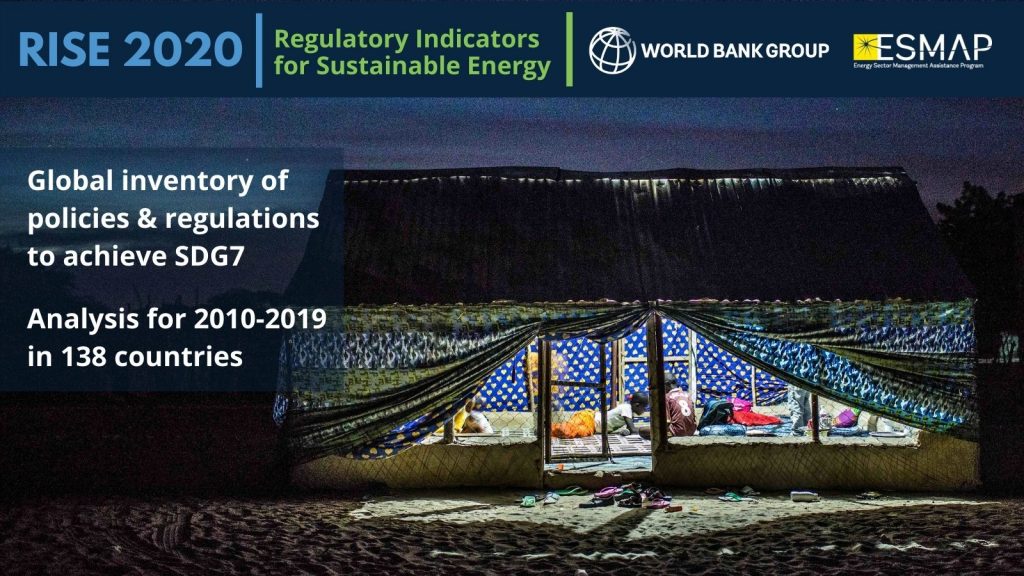- Date
- 16th December 2020
- Categories
- General
ESMAP just launched RISE 2020: Sustaining the Momentum, the third edition of the RISE report- Regulatory Indicators for Sustainable Energy. For the first time, RISE report includes a full pillar on clean cooking.

Please see the key messages on clean cooking below and the full report, along with detailed country profiles, is available at https://rise.esmap.org/.

Key clean cooking messages from the report:
There are disparities in policy making for clean cooking within and among regions and income groups. South Asian countries lead on policy and regulatory frameworks, though Latin America and the Caribbean has shown the greatest gains since 2010. Sub-Saharan Africa has the lowest regional average despite consistent progress (from a low starting point) since 2010. Lower-income countries are concentrated in the red zone, yet green zone countries include some low-income nations that have robust policy frameworks, such as Ethiopia, Malawi, and Uganda.
The number of countries scoring in the green zone rose from zero in 2010 to eight in 2019. These countries represent more than half of the global population with lack of access to clean cooking.[1] Significant improvements also occurred for many countries whose policies scored in the red zone as of 2010. While the period between 2010 and 2017 was notable for progress in upper- and lower-middle-income countries in Asia (Bangladesh, Cambodia, China, India, Indonesia, Mongolia, and Nepal) and Latin America (Guatemala), the period between 2017 and 2019 saw large improvements in low income Sub-Saharan Africa countries, notably Benin, Kenya, Nigeria, and Tanzania, which moved from the red zone to the yellow zone.
Half of the population that still lacks access to clean cooking reside in countries with advanced policy frameworks (green zone). There was a strong impetus to raise access in China, Ethiopia, India, Indonesia, and Kenya, which has resulted in significant policy improvement. These green zone countries are home to 1.4 billion people who lack access, more than half the global population in that situation. Their clean cooking strategy comprises institutional strengthening, building of an enabling policy and regulatory environment, widespread awareness drives, last-mile distribution strategies for LPG and improved cookstoves, and stimulation of household demand through subsidies and financing mechanisms.
Countries afflicted by fragility, conflict, and violence (FCV) have seen few policy improvements in clean cooking, endangering women. On every indicator of clean-cooking policy the FCV countries as a group perform only half as well as non-FCV countries. There is an urgent need for clean cooking interventions in settings characterized by fragility, conflict, and violence, because fuel collection exposes women and girls to violence, in addition to damaging the environment.
[1] The RISE clean cooking pillar is based on four indicators: planning, inclusiveness, standards and labeling, and incentives to increase uptake of clean cooking solutions.